Let Us Begin!
I picked up my paddle board and stepped out of the house. Approached my car, and there you go! I am down with my darling SUP board hurting myself, but all I care about is my board.
Snap out! ‘It is just a dream’. How does that sound? Quite disturbing I know! But some dreams are best broken, my friend. It is time we make new dreams with more effort and understanding.
This eventually begs the question; how much does a stand-up paddle board actually weigh? A paddle board weighs around 21-30 pounds, but that is not all because the weight of the SUPs has a wider limit.
Stand-up paddle boards have different weights according to their structure. It depends on the size of the board and the material used for its making. Now that I have given you an idea of their weight, let us dig deeper and see in detail the factors involved in their weight.
How Heavy Is a Paddle Board?

For something this sporty, you would want an easy weight to carry. But it is not always heavy things that are a hassle, sometimes they are essential.
Paddle board weights rank from highest to lowest, depending upon the substance used.
- Carbon boards are the lightest
- Plastic boards are the heaviest
- Fiberglass and Epoxy boards come in between.
Stand-up paddle boards can weigh as little as 15 pounds and as high as 50 pounds. The average weight of the SUPs is somewhere between 20-30 pounds.
Smaller boards are mostly light in weight and are easy to carry and use. They are easily transported by a single person. I believe the lightweight ones make the best ocean paddle boards.
Whereas on the other hand, bigger boards weigh heavily and are high in price as compared to smaller boards. You might need a helping hand in loading and unloading them.
Factors Affecting Paddle Board Size and Weight?
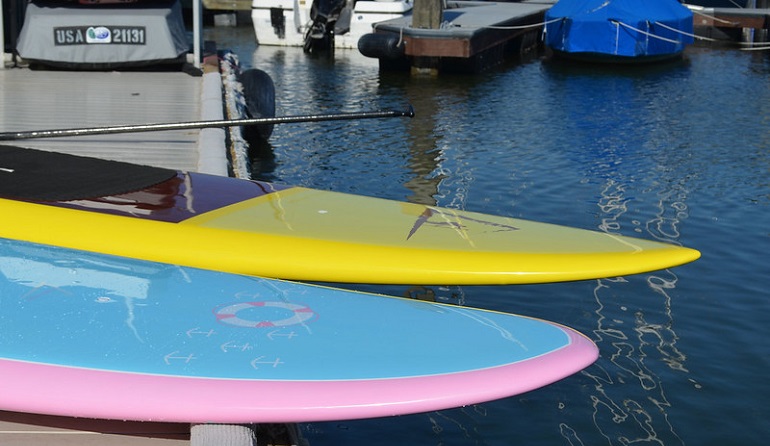
There are many factors that determine the weight and volume of the paddle boards. Paddlers’ body weight is one of them; the following are the other factors:
- Weight – A person’s weight is the first thing that comes to mind, as it can increase the chance of the board weighing higher.
- The number of people – The number of people coming along on the board can affect the weight. This may also include the pets you are bringing along, food snacks you are carrying with you, and other equipment you might keep.
- Type of ride – Last but not least, the kind of ride you would intend to take is a major factor. Some advanced riders might want to ride a board that will help them with race surfing, whereas few might end up with a board that gives them space for yoga.
How Much Do Inflatable Paddle Boards Weigh?

Inflatable SUP also varies from one form to another. Usually, the best in weight are these inflatable boards. The lightest inflatable paddle board weighs somewhere between 10-15 pounds.
The interior of these inflatable paddle boards is filled with air and not solid material. Hence, they are lighter than other SUPs. The more air induced; the more the weight will be. It is a basic understanding.
But everything that glitters is not gold my friend. We all want gold, don’t we? Let me burst that bubble. The heaviest inflatable paddle board weighs around 40-50 pounds.
It is not all as light and easy as you think. The weight of drop-stitched fabric coating and PVC coating can build up the weight pretty fast.
However, these inflatable boards are the easiest to carry or travel with. Portability for these SUPs is a plus point. Their best quality is they don’t take up much space. You can fold these lighter boards and put them in your backpack.
Best inflatable paddle boards can travel with you anywhere you go.
Types of Construction in Inflatable Paddle Boards
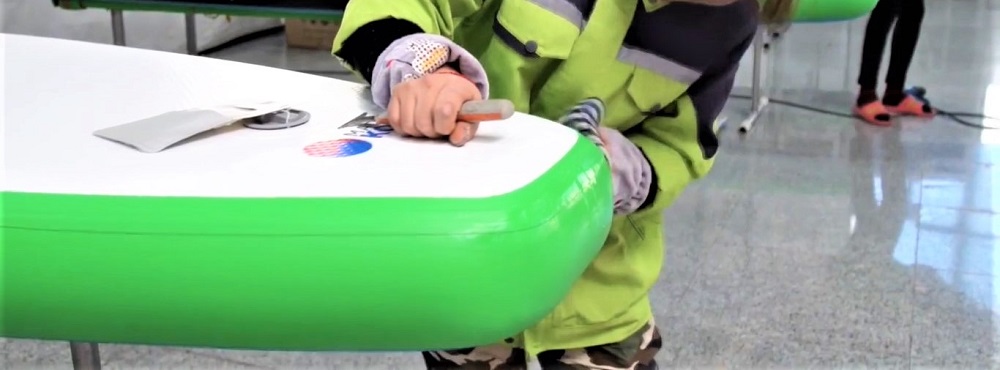
Inflatable paddle boards are the easiest to carry because of their weight, hence being ideal for paddle boarding. The inflatable paddle board’s weight range also depends on the construction. They are designed in three different layers for different purposes.
Single Layer Drop Stitching
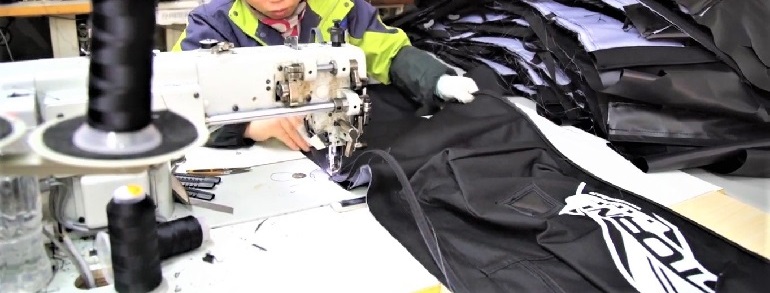
Single-layer drop is the lightest paddle board available with only one stitching. PVC coating has been applied on the top layer of the fabric, and the weight range lies between 12-45 pounds. Any extra layer will increase the weight, eventually making it 4-5 pounds heavier.
Multi-Layer Drop Stitching

A single-layer model, after getting an extra plastic coating to its base creates multiple layers. Naturally, their weight will exceed that of a single layer weighing around 20-50 pounds. With every added layer, an estimated 3-4 pounds weight will increase making it heavier.
Fusion Layer Drop Stitching

Inflatable SUP boards with multi-layers are known as the fusion layer drop stitching method. In this, any extra PVC coating layers are not needed which results in less weight but with the same rigidity. That is exactly what we want; a top-class product with a top-class offer.
These boards weigh somewhere between 20-45 pounds, and their weight limit varies because the board is designed with great thickness.
How Much Does A Paddle Board Weigh by Length?
Factor such as the length of the paddle board is an important part of the list to keep in mind when talking about weight. It can approximately weigh an average of 30 pounds.
The long paddle board can maximum hit to 40 pounds whereas the shorter ones can lower down to 15 pounds. The boards are divided into three parts;
Longboards
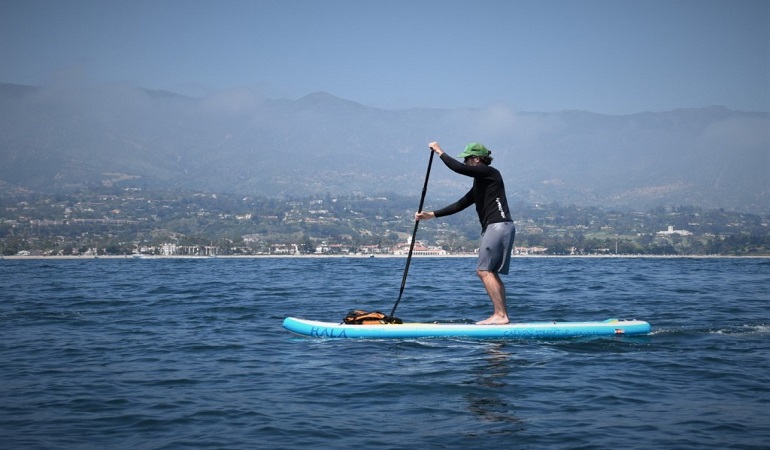
12-14 feet long, they track more consistently and faster than both medium and short boards. A longboard is recommended if you wish to paddle rapidly or go long distances. We can have a race on them if you are willing!
Medium Boards

10-12 feet long, very versatile boards. They shape a beginner to be a good rider. They are ideal as the best fishing SUP, yoga SUP, and for basic technique learning.
Shortboards

Less than 9 feet long, these SUPs are, in particular, built for enhanced mobility and speed. Since they are smaller, their sensitivity to the riders’ weight distribution is greater.
How Much Does Paddle Board Weigh by Construction Materials?
Structural integrity, in general, depends on the construction of the SUP boards. It is designed in a way to give a high-notch performance to its paddle boarder. These are the deciding factor for the increase or decrease of board weight.
Carbon Fiber

Despite being very light and naturally swift, carbon boards are nevertheless pricey and prone to damage.
Foam
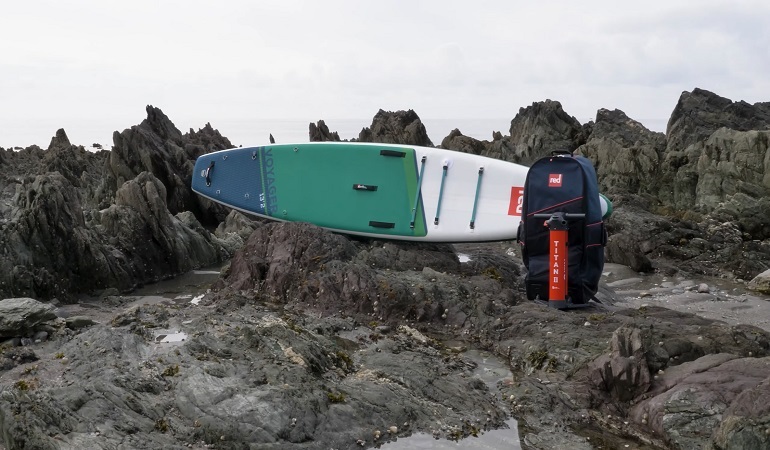
Due to its extreme affordability and lack of durability, it is perfect for beginners. It has a foamed ethylene polystyrene core.
PVC
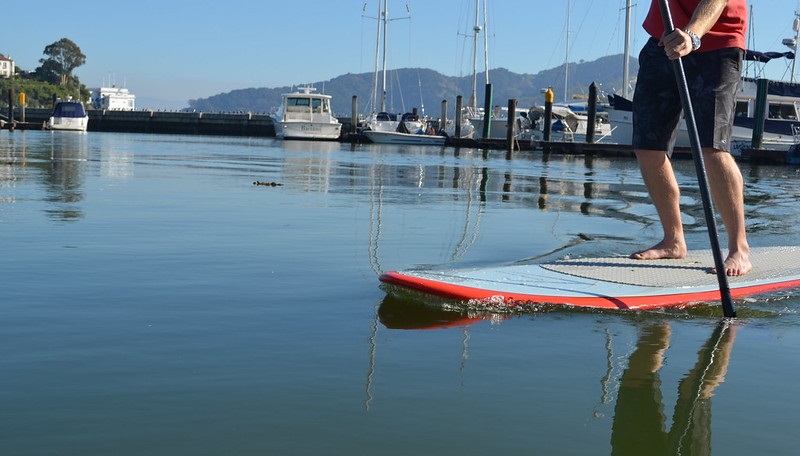
Although inflatable paddle boards are quite lightweight and compact, they don’t survive as long as many solid boards do and don’t function as well.
Fiberglass
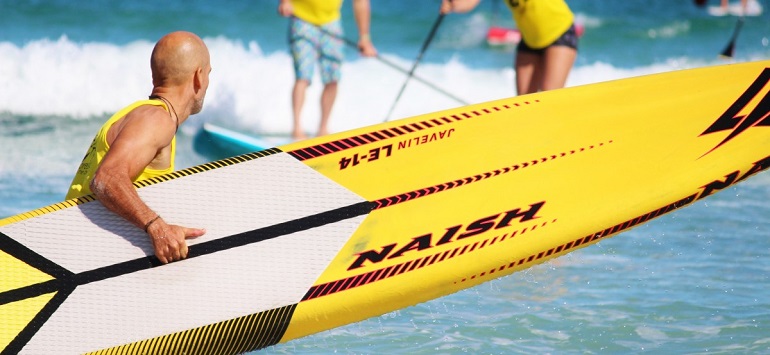
The greatest material in terms of weight, strength, and mobility seems to be fiberglass boards. Although they can be expensive and challenging to store and transport.
Wood

In addition to being heavier and more expensive, wood requires more maintenance. SUP boards made of hardwood feature hollow cores enclosed in a wooden frame. Cyder, cypress, or other species of wood are then glued on top of the bottom to finish the board.
How Much Weight Can a Stand-Up Paddle Board hold?

Generally speaking, a typical hard SUP may be able to hold approximately 200 to 300 pounds on average. On the other hand, a regular inflatable paddle board can support about 400 pounds of weight – and even more, depending on the model.
So this information highlights the stark difference in the weight limit of rigid boards and inflatable paddle boards. You know riders would opt for convenience over other things, and that’s one reason why inflatable stand-up paddle boards are occupying the throne.
Paddleboard Buoyancy and Volume
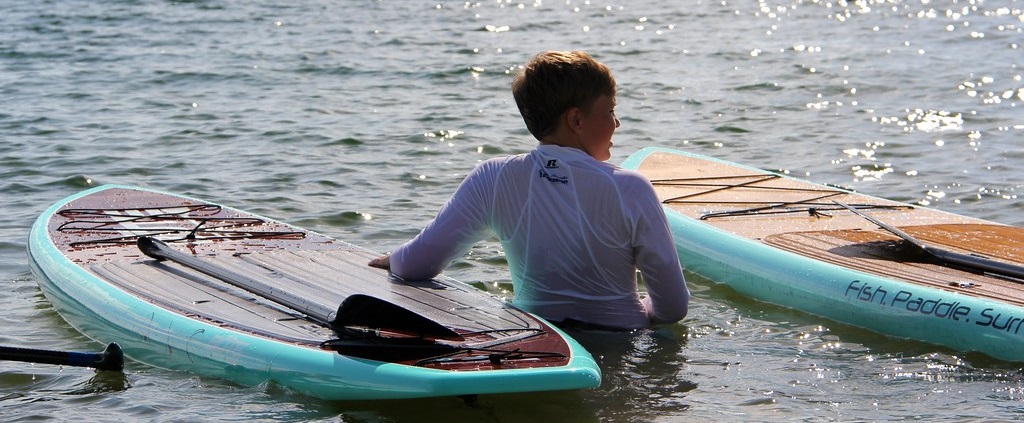
Buoyancy is the tendency of an object to float in a fluid. It is linked to the paddle board volume.
The weight a paddle board can hold depends on the volume of the board. A person with less weight will float higher and be more stable on any given board than someone with greater weight.
SUP’s capacity to sustain and float weight depends on its length, width, thickness, and manufacturing material. Picking a board with appropriate buoyancy to support your weight and float is crucial. Low stability results from the board being lowered into the water.
The golden rule to a controlled paddle board that keeps you elevated on the water to traverse smoothly is to select an appropriate weight capacity.
For someone with a heavy body structure; larger, heavier, and wider boards are the best weighing 40 pounds. While for shorter and lighter paddlers; narrower, shorter, and thinner boards are suitable, weighing 20-30 pounds.
What Size Paddle Board Do I Need For My Weight?
Generally speaking, and we all know this; getting yourself the right board is as important as knowing how to paddle. You just need to choose wisely.
Technically your SUP size and board weight should match your own size. The heavier the paddlers are; the heavier boards they should opt for.
For an ideal volume range, you should multiply your weight in pounds by 1.0 and 1.4. For beginners and paddle boarders looking for an accurate and best stand-up paddle board, this is your throne to claim.
Shortboard that is less than 10 feet long is best for paddle boarders who weigh less than 140 pounds. Boards that are 11 feet long are ideal for paddlers who weigh between 140-200 pounds. Additionally, a 12 feet long board works well for paddlers who weigh above 200 pounds.
Points to Take Away!
Paddle-boarding can all be fun unless you put extra weight on the board’s volume. The right paddle board with the right length and body weight can give you all the movement you want.
You can have a whole day touring and catching waves as much as you want on the paddle board. But for more stability, knowing the kind of paddle boarding you intend to do is an important factor.
The type of paddle board you opt for is another task. You should be able to identify the strengths of your board. You cannot put all the blame on the manufacturers and grab a safe corner. Take a step towards the beginning and try whatever you think is convenient. Also, take into account the size of the paddle board you need for your weight and height.
Remember; sometimes fitness is not all you need, a calculated effort is as important. In the end, it is you who has to be courageous enough to step into the water! Make your move; but be sure it is a smart one because we are smarter than that, aren’t we?
0 Comments